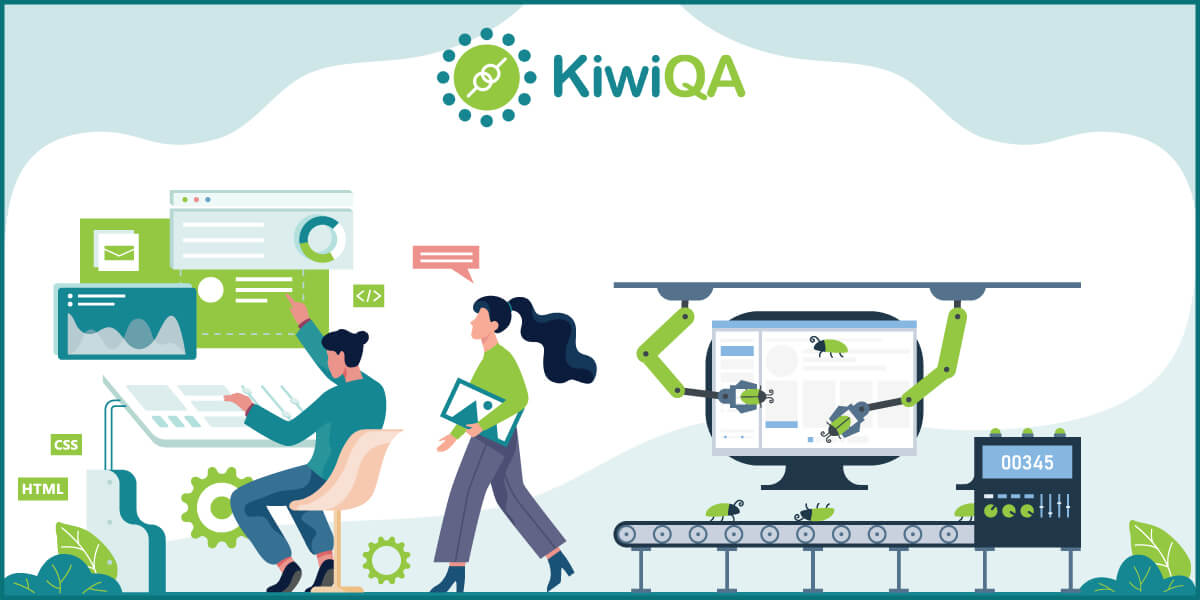Software enterprises across the world increasingly focus on reducing the overall TTM (Time To Market) in order to have an upper edge over the competition. To achieve this, it is essential to implement agility across the product planning, development, and testing processes.
As far as software testing is concerned, there are options for manual testing and automation testing. An informed decision needs to be taken to leverage the advantages offered by the respective testing methodologies for the betterment of the product. To do this, it is important to understand the difference between manual testing and automation testing, let’s break down that difference in this blog.
What is Manual Testing?
In manual testing, testers perform tests to look for defects in the software. These tests are normally documented in the test plan prepared by using different requirement specification documents.
The test plan is also termed Test Specification Document. It majorly contains the nitty-gritty of the test scenarios to be executed, including the steps involved in running the tests.
For manual testers, the product is like a Black Box since they do not have complete clarity about the internal functioning of the product. Hence, manual testers test the product features by stepping into the shoes of the end-users. Testers in the manual testing space rigorously test the functionalities and raise bugs in a bug-tracking system in case there are discrepancies from the expected behavior.
Also Read: Reasons Why Manual Testing Is Not Dead Yet
When to use Manual Testing?
Since tests have to be executed from an end-user’s perspective, manual testers require minimal (to no) technical expertise. However, having good domain competency does help in coming up with out-of-the-box test scenarios for testing various features of the product.
Manual testing is preferred when behavioral abilities are required for testing the software. You should opt for manual testing over automation testing in the following scenarios:
1. Usability Testing
As the name indicates, usability testing is a form of testing that takes into account the user-friendliness or efficiency of the product. Since the test is performed from an end-user’s perspective, a manual approach is preferred for usability testing.
2. Exploratory Testing
In this particular category of manual testing, tests are not based on the documented test scenarios. The tester dons a creative hat and uses his/her knowledge, analytical capabilities, etc. to run tests.
Testers also use personal freedom to use navigation choices just like they are used by the end-users. Since this form of testing requires an immense amount of human skills, it cannot be performed using any automation testing tool.
3. Ad-Hoc Testing
This form of testing is completely unplanned where the tests are performed in a random manner. It helps in unearthing issues that developers would have accidentally missed out while implementing the user journey.
There are scenarios where the in-house testing team has more expertise in automation testing. The downside is that the team might be willing to use automation testing in areas where manual testing would be more efficient.
This is where it makes sense to incorporate manual testing in the testing checklist with the help of a company with expertise in providing manual software testing services. Now that we have answered the what and why of manual testing, let’s look at the various aspects of automation testing.
What is Automation Testing?
Before we jump into the ‘what’ of automation testing, it is essential to understand the changing landscape of the software testing field. An agile approach to software development and testing is no longer a buzzword as software enterprises (irrespective of the scale) are leveraging its potential to achieve reduced TTM (Time to Market).
This is only possible when adequate time is allocated to software testing and tests are performed at scale. However, ‘Manual Testing’ and ‘Lightning Speed’ cannot be used in the same breathe, as manual testing is a resource-driven exercise and speed can only be achieved by on-boarding more manual testers for the project.
This is where automation testing comes into the picture, as it lets you leverage the advantages of cloud and test automation frameworks to perform testing at scale. Needless to mention that automation testing expedites the entire process of software testing and helps you shorten the product release cycles.
Automation testing is a form of software testing where the product features are tested using test automation frameworks.
Selenium is one of the widely used test automation frameworks for testing websites and web apps. On the other hand, Appium is widely used for mobile app testing.
Also Read: A Complete Guide to Dos and Don’ts of Test Automation
The test automation framework used for realizing automation testing could fall in one of the following categories:
- Linear
- Agile
- Data-Driven
- Key-Driven
You should choose an automation testing tool depending on the business requirements, project timelines, and expertise available within the team.
A company that provides software test automation services can be a huge value-addition to expedite the automation testing process, thereby enabling faster time to market.
When to use Automation Testing?
Automation testing is normally preferred in scenarios where you want to improve the test coverage via testing the repetitive (or exhaustive) test scenarios.
You should opt for automation testing over manual testing in the following scenarios:
1. Load Testing
Load testing is used for testing the product against different load conditions. It checks the behavior of the system during normal and high loads. This helps in verifying if there is any performance degradation at a ‘certain load’.
The performance data is further used for taking corrective actions to ensure that there are no performance glitches (at different load conditions) in the end product.
2. Performance Testing
Your web product might be giving a top-notch performance when a limited number of users are logged on to the application. However, things might change if a large number of users (e.g. in thousands) are simultaneously connected to the system. Performance testing helps in simulating such user scenarios through automation.
3. Regression Testing
Regression testing is a form of automation testing where periodic tests are used to verify if recent code changes are breaking any existing functionality.
In a nutshell, automation testing should be chosen over manual testing when tests have to be run in a repeated manner. Tests that require repeated execution should be automated using the best-suited test automation framework (e.g. Selenium, Appium, Cypress, etc.).
On the other hand, manual testing should be opted over automation testing when you intend to test the functionality or aesthetics of the web product. Now that we have covered the essentials of manual testing and automation testing, it’s time for a side-by-side comparison.
Also Read: Decoding the Difference between Robotic Process Automation and Test Automation
Manual Testing vs. Automation Testing [The Face-Off]
Here is the side-by-side comparison of manual testing vs. automation testing:
|
Manual Testing |
Automation Testing |
| Manual testing is a resource-intensive testing methodology since humans are performing testing in a manual way. | Automation Testing requires investments in the right test automation frameworks. |
| Manual testing is more error-prone and less reliable in comparison to automation testing. | Automation testing is more reliable as the tests are run using automation testing tools. |
| High scalability and reliability are not possible with manual testing. | Scalability and reliability can be achieved with automation testing. Automation tests can be run in parallel thereby bringing down execution time and improving the test coverage. |
| Manual testing is suited for testing the UI/UX and other aspects of the web product that requires human observation. | Automation testing is used when repetitive tests (that do not require human intervention) have to be run at scale. |
Manual testing is preferred for running the following tests:
|
Automation testing is preferred for running the following tests:
|
| Manual testers only need domain expertise. Having technical expertise is optional. | Automation testers should have coding experience since they would write tests using the appropriate test automation frameworks. |
Conclusion
Automation testing or manual testing or both? This is a common question that test leads have in their minds when preparing a testing checklist for testing website and mobile apps. It becomes important to strike the right balance and leverage human intelligence for testing features related to UI/UX, user-friendliness, and other such aspects of the web product.
Automation testing should be leveraged for testing features and functionalities at scale. Almost all test automation frameworks support parallel test execution and execution on the cloud. This helps in improving the test coverage as well as the product quality. KiwiQA, a global enabler in software test automation services provides the essential resources to build the foundation for a super-effective test automation strategy.











